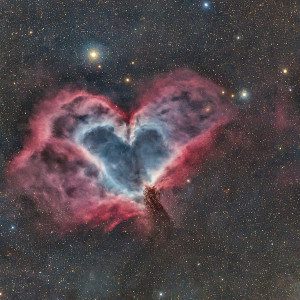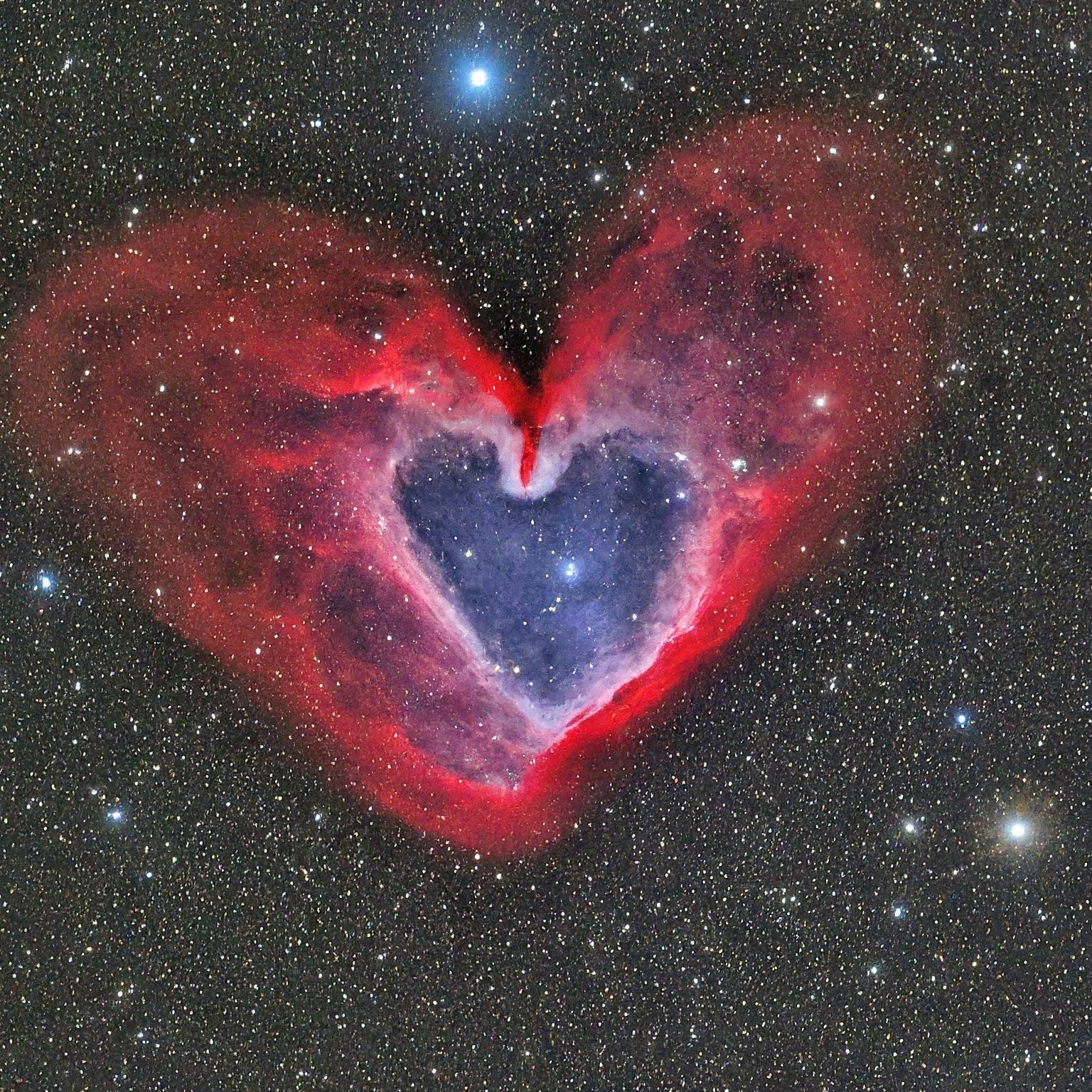As we gaze upon the vast expanse of the cosmos, we are greeted by a magnificent tapestry of awe-inspiring wonders. Among these treasures, the majestic Heart Nebula stands out as a radiant testament to the artistry of the universe. Its intricate shape and rich, vibrant colors beckon us to delve deeper into its mysteries, captivating the minds of astronomers and stargazers for generations. Yet, beyond its alluring beauty, there lies a wondrous story of celestial creation, turbulent winds, and the delicate balance of life and death amongst the stars. So, let us embark on a journey through the cosmos, unraveling the enigmatic secrets of the Heart Nebula and basking in its ethereal wonder.

A Symphony of Starlight and Dust
The Heart Nebula is not merely a stunning sight to behold; it is a celestial symphony unfolding in the vastness of the universe. The intermingling of light and gas within the nebula creates a captivating display, with young stars bursting into existence with brilliant blue and white hues, while their older counterparts infuse the surrounding dust with a cool, reddish glow. This cosmic masterpiece is further embellished by delicate streams of gas, illuminated by the radiant energy of the stars, reminiscent of pulsating veins and arteries, giving the nebula a sense of vibrant vitality.
A Cradle of Cosmic Cloudscapes
Delving deeper into the nebula reveals a wonderland of diverse cosmic cloudscapes. Pillars of gas and dust, sculpted by stellar winds, stand tall like celestial sentinels, their tips aglow with the nascent light of embedded stars. Bok globules, dense dust, and gas clumps lurk within the nebula’s heart, harboring the potential for future stellar generations. These diverse structures paint a dynamic portrait of the nebula’s ongoing story, showcasing the delicate balance between creation and destruction within the interstellar realm.
A Haven for Hidden Treasures
Beyond its mesmerizing beauty, the Heart Nebula holds secrets to be unraveled. Astronomers have discovered evidence of protoplanetary disks, swirling clouds of dust and gas that could give rise to planetary systems around young stars. These hidden treasures offer tantalizing glimpses into the potential for life beyond our solar system, igniting our imaginations and fueling our quest for extraterrestrial existence.
A Timeless Dance of Destruction and Rebirth
The Heart Nebula is a microcosm of the universe’s grand narrative, where the dance of destruction and rebirth plays out on a cosmic scale. Supernova explosions, the fiery farewells of massive stars, inject the nebula with shockwaves and heavy elements, enriching the interstellar medium and paving the way for future stellar generations. This cycle of death and rebirth highlights the dynamic nature of the cosmos, where even the seemingly permanent gives way to the ever-evolving tapestry of the universe.
A Window to the Cosmos’ Past
Gazing upon the Heart Nebula is akin to peering into the past. Light takes time to travel, so when we observe the nebula, we are witnessing events that transpired thousands, even millions of years ago. This celestial time capsule allows us to study the early stages of star formation and shed light on the processes that shaped our solar system and the Milky Way galaxy.
The Heart Nebula: A Beacon of Inspiration
The Heart Nebula is more than just a celestial marvel; it’s a source of inspiration for artists, scientists, and dreamers alike. Its captivating beauty ignites our curiosity, prompting us to explore the universe’s vastness and ponder our place within it. The nebula’s story of creation, destruction, and rebirth reminds us of the interconnectedness of all things and the delicate balance that sustains life in the cosmos.
So, the next time you gaze upon the night sky, remember the Heart Nebula, a celestial beacon of love, creation, and the ever-turning cycle of life and death in the cosmos. Let its beauty and mysteries inspire you to explore, wonder, and dream of the possibilities that lie beyond our world.

